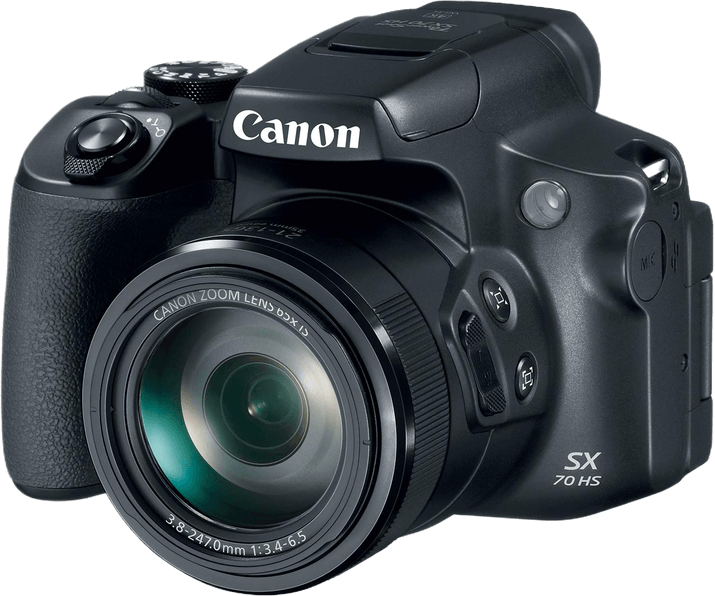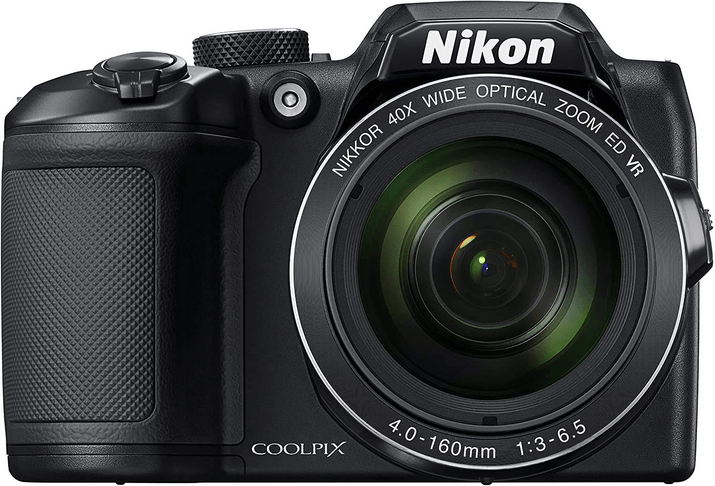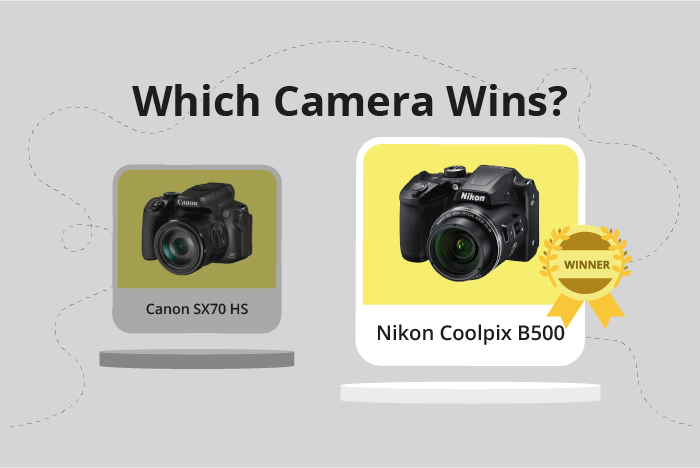Canon PowerShot SX70 HS vs Nikon Coolpix B500 Comparison
Canon PowerShot SX70 HS

Nikon Coolpix B500

The Nikon Coolpix B500 edges out the Canon PowerShot SX70 HS with a score of 53/100 against 49/100. Both cameras are bridge types and share similar specifications, including their announcement years, 2016 for Nikon and 2018 for Canon.
The Canon PowerShot SX70 HS outshines the Nikon Coolpix B500 with a higher launch price of $549, a larger size of 127 x 91 x 117mm, and a heavier weight of 608g. These features may suggest a more advanced and feature-rich camera.
On the other hand, the Nikon Coolpix B500 boasts a lower launch price of $300, a smaller size of 114 x 78 x 95mm, and a lighter weight of 541g. These characteristics make it a more budget-friendly and portable option for photographers.
Considering the scores and specifications, the Nikon Coolpix B500 offers a better balance of affordability and portability, while the Canon PowerShot SX70 HS may provide a more advanced photographic experience.
Canon PowerShot SX70 HS vs Nikon Coolpix B500 Overview and Optics
The Nikon Coolpix B500 emerges as the winner in the optics comparison with a score of 53/100, while the Canon PowerShot SX70 HS scores 49/100. Both cameras share some specifications, including the 1/2.3″ CMOS sensor, fixed lens mount, and the absence of a lens mount due to the fixed lens system.
The Coolpix B500 outperforms the PowerShot SX70 HS in several aspects. With a DXOMARK sensor score of 72, the B500 has a superior sensor performance compared to the SX70 HS’s score of 58. Additionally, the B500 features image stabilization, which the SX70 HS lacks. This allows the B500 to capture sharper images in various shooting conditions, particularly in low light or when using longer focal lengths.
On the other hand, the PowerShot SX70 HS has its advantages as well. It boasts a higher megapixel count of 20 compared to the B500’s 16, which can result in more detailed images. The SX70 HS also has a faster shooting speed of 10 frames per second, while the B500 has a shooting speed of 7. Furthermore, the SX70 HS is equipped with Canon’s advanced Digic 8 processor, which can enhance image quality and overall performance.
Despite the higher megapixel count and shooting speed of the SX70 HS, the Nikon Coolpix B500’s superior sensor performance and image stabilization make it the better choice in terms of optics. The Canon PowerShot SX70 HS still has its merits, but the B500 stands out as the winner in this comparison.
Canon PowerShot SX70 HS vs Nikon Coolpix B500 Video Performance
The Canon PowerShot SX70 HS outperforms the Nikon Coolpix B500 in video capabilities with a score of 91/100, a 21-point difference from the Nikon Coolpix B500’s score of 70/100. Both cameras share some common specifications, including time-lapse functionality built-in.
The Canon PowerShot SX70 HS excels with a maximum video resolution of 4K and dimensions of 3840 x 2160, providing a higher quality video than the Nikon Coolpix B500. Additionally, the Canon PowerShot SX70 HS boasts a maximum video frame rate of 120fps, which allows for smoother footage and better slow-motion capabilities compared to the Nikon Coolpix B500’s 60fps limit.
The Nikon Coolpix B500, on the other hand, has a maximum video resolution of Full HD and dimensions of 1920 x 1080. While this is lower than the Canon PowerShot SX70 HS, it still delivers decent quality video for casual users. Its maximum video frame rate of 60fps is not as impressive as the Canon PowerShot SX70 HS, but it can still capture smooth footage for most purposes.
Taking these factors into account, the Canon PowerShot SX70 HS is the superior choice for video capabilities due to its 4K resolution, larger video dimensions, and higher frame rate. The Nikon Coolpix B500 may be suitable for casual users who do not require the higher video quality and frame rate offered by the Canon PowerShot SX70 HS.
Canon PowerShot SX70 HS vs Nikon Coolpix B500 Features and Benefits
The Canon PowerShot SX70 HS and the Nikon Coolpix B500 both have a feature score of 54 out of 100. These cameras share several specifications, including a 3-inch screen size, no touchscreen, a flip screen, no GPS, WIFI, and Bluetooth connectivity. Despite their similar scores, each camera has its advantages.
The Canon PowerShot SX70 HS has a slightly higher screen resolution of 922,000 dots compared to the Nikon Coolpix B500’s 921,000 dots. This difference in resolution may provide a marginally clearer and more detailed image preview on the camera’s screen. Moreover, the SX70 HS is known for its excellent image quality, versatile zoom range, and user-friendly interface, making it a suitable option for photographers who prioritize image quality and user experience.
On the other hand, the Nikon Coolpix B500 stands out with its lower price point and ease of use, making it a more budget-friendly option for those who are new to photography or simply want a capable point-and-shoot camera. Additionally, the B500’s lightweight design and ergonomic grip make it comfortable to use during extended shooting sessions.
In comparing the Canon PowerShot SX70 HS and Nikon Coolpix B500, it is essential to consider the specific needs and preferences of the photographer. While the SX70 HS offers marginally better screen resolution and image quality, the B500 provides a more affordable and lightweight option. Ultimately, both cameras have their strengths and cater to different user requirements.
Canon PowerShot SX70 HS vs Nikon Coolpix B500 Storage and Battery
The Nikon Coolpix B500 outperforms the Canon PowerShot SX70 HS in storage and battery, scoring 43/100 compared to the Canon’s 21/100. Both cameras share common specifications, such as having one memory card slot and accepting SD, SDHC, and SDXC memory cards.
The Nikon Coolpix B500 excels with a longer battery life of 600 shots, compared to the Canon’s 325 shots. Also, the Nikon has the advantage of USB charging, making it more convenient for users. However, the Canon PowerShot SX70 HS uses a dedicated LP-E12 battery type, offering a more consistent and reliable power source than the Nikon’s 4 x AA batteries.
Considering these factors, the Nikon Coolpix B500 offers a better storage and battery experience due to its longer battery life and USB charging capabilities. The Canon PowerShot SX70 HS, while having a more reliable battery type, falls short in other aspects.
Canon PowerShot SX70 HS vs Nikon Coolpix B500 – Our Verdict
Are you still undecided about which camera is right for you? Have a look at these popular comparisons that feature the Canon PowerShot SX70 HS or the Nikon Coolpix B500:

